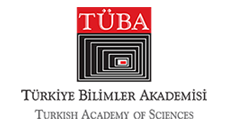Turkish - Islamic Scientific and Cultural Heritage Project's 62nd Work: Suleiman the Magnificent's Eastern Campaign Diary
 The 62nd work published as part of the Turkish-Islamic Science and Culture Heritage (TİBKM) Project launched by TÜBA in 2014, Sultan Suleiman the Magnificent's Second Eastern Campaign and Campaign Diary (955-956 / 1548-1549), has been released to readers.
The 62nd work published as part of the Turkish-Islamic Science and Culture Heritage (TİBKM) Project launched by TÜBA in 2014, Sultan Suleiman the Magnificent's Second Eastern Campaign and Campaign Diary (955-956 / 1548-1549), has been released to readers.
Continuing under the auspices of the Presidency since 2018, the TİBKM Project contributes to humanity's knowledge base by publishing facsimiles, transliterations, and modern Turkish translations of classic works belonging to the Turkish-Islamic scientific and cultural heritage, rescuing them from their neglected state in libraries and making them available to scholars, cultural figures, and future generations.
In this context, the diary prepared for publication by TÜBA Full Member Prof. Dr. Feridun M. Emecen and Prof. Dr. Vural Genç, Kanuni Sultan Süleyman’ın İkinci Doğu Seferi ve Sefer Rûznâmçe Defteri (Kanuni Sultan Süleyman's Second Eastern Campaign and Campaign Diary) (955-956 / 1548-1549), details the daily income and expenses of the treasury prepared by the Ottoman financial bureaucracy in relation to the organization of the campaign. The series of diaries, known as ruznamçe, provide unique information for studies on logistical issues.
Income and expense ledger: Treasury holdings recorded in detail
Prof. Emecen emphasized that these works, which are of great importance in the history of Turkish thought and were originally written in Arabic, Persian, and various Turkish dialects, have been translated into modern Turkish and made available to 21st-century readers, thus making an important contribution to reminding people of the position of Turks in the history of thought and culture. He said the following about the work: Sefer Rûznâmçe Defteri was kept during Sultan Suleiman the Magnificent's second Eastern campaign in 1548. It is both extremely valuable and a rare early example that clearly demonstrates the perfection achieved by the Ottoman bureaucracy, as it shows the revenues recorded in the treasury and the expenditures made from it on a daily basis throughout the 1548-49 Eastern campaign. The ledger, which details the treasury's cash and goods holdings, meticulously records where and when revenues and expenditures occurred during the campaign. This allows for a clear understanding of the sources of revenues and exactly where they were spent. This information also provides the capacity to be converted into statistical data," he said.
Based on the information provided in the Ruznamçe (logbook), it is possible to calculate the approximate average of income and expenses per month over this approximately two-year period, determine how much of this income was recorded in cash and goods for the treasury, how much of it was spent, and whether the treasury experienced a cash shortage. -expenditure by month, and whether the treasury faced cash shortages. He stated that expedition expenses were planned accordingly, representing an approach somewhat akin to modern bureaucratic understanding and serving as a unique example in this regard. He emphasized that the ledger is extremely important not only in terms of treasury transactions but also in terms of providing access to crucial information based on historical events related to the expedition and demonstrating the level and accumulation of Ottoman bureaucracy. He also stated that the work is a fundamental source for those who will conduct research on Ottoman financial history, organization, and bureaucratic mentality.

